 Hello, gentle readers, and welcome to the RPG Reload, the weekly feature where we add a piece to our banner with each game played. Each week, we take a look at an RPG from the App Store’s past to see how it holds up in the harsh light of today. It’s a chance to play some old favorites one more time, to see how a game settled into the iOS landscape over time, or simply to take a deeper dive than our reviews typically allow for. As the Mr. Miyagi of this particular dojo, I decide which titles we wax on about from week to week. I try to keep things fairly balanced, but if you feel like there’s a great game I’m missing out on, please let me know. You can do that by posting in the comments below, stopping by the Official RPG Reload Club thread in the forums, or by tweeting me at @RPGReload.
Hello, gentle readers, and welcome to the RPG Reload, the weekly feature where we add a piece to our banner with each game played. Each week, we take a look at an RPG from the App Store’s past to see how it holds up in the harsh light of today. It’s a chance to play some old favorites one more time, to see how a game settled into the iOS landscape over time, or simply to take a deeper dive than our reviews typically allow for. As the Mr. Miyagi of this particular dojo, I decide which titles we wax on about from week to week. I try to keep things fairly balanced, but if you feel like there’s a great game I’m missing out on, please let me know. You can do that by posting in the comments below, stopping by the Official RPG Reload Club thread in the forums, or by tweeting me at @RPGReload.
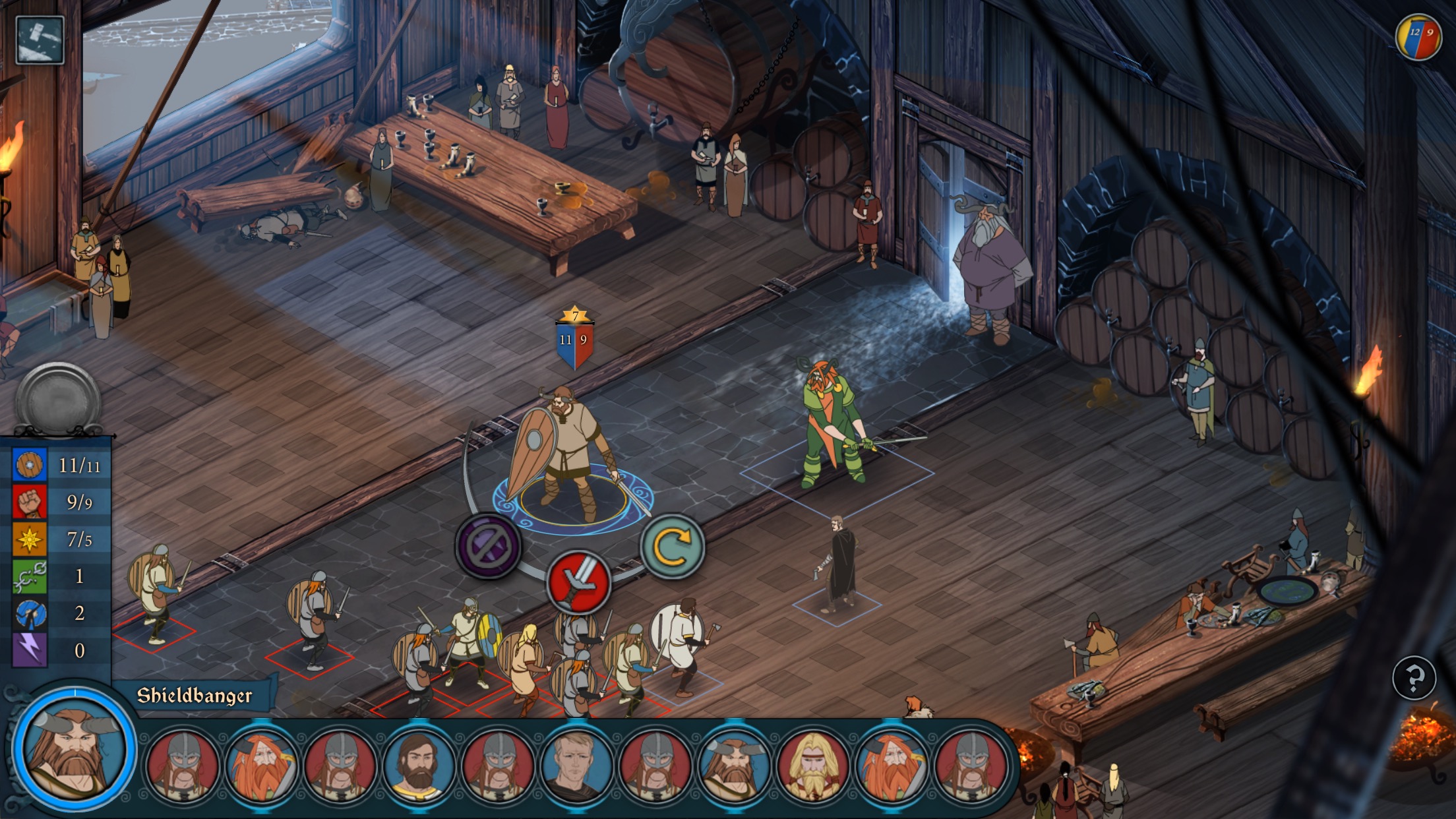
This week, we’re taking a look at The Banner Saga ($9.99), a game whose development is a saga unto itself. It’s one of the more successful games to come out of a Kickstarter campaign, as although its development had a few twists and turns, the game was finished more or less as described with only a year or so of delays. Importantly, the game turned out to be pretty fun, too, albeit not without its flaws. The game is mostly a turn-based strategy RPG in the vein of Final Fantasy Tactics ($13.99), but it also incorporates some larger-scale battles that, for whatever reason, remind me of Konami’s Suikoden series. Between the fights, you’ll often have to make choices that affect both the story and your caravan’s resources, which calls King of Dragon Pass ($9.99) to mind. Wrap all that up in a gorgeous presentation that patterns itself after classic Western animation, add in a story and setting that feel different from the norm, and you’ve got a game that’s sure to please almost any strategy game fan.
It might seem like an impressive win for a rookie developer like Stoic, but while The Banner Saga is the team’s first release under that banner, the three men who founded it had years of experience behind them. Based in Austin, Texas, Stoic was founded by three ex-employees of BioWare Austin, the developer of MMO Star Wars: The Old Republic. Arnie Jorgensen was the lead concept artist on that game, John Watson was the lead combat programmer, and Alex Thomas wore a number of hats including writing, design, and illustration. After working on Star Wars for several years, they decided to go independent and founded Stoic Studio in January 2012. While they didn’t have a ton of cash, they didn’t want to go the route of making something small or casual. They wanted to keep on making epics. The trio came up with an idea inspired by Norse folklore, classic games like Final Fantasy Tactics and King of Dragon Pass, and TV shows like Game of Thrones. They estimated they would need $100,000 to put the game together, but where can a developer get that kind of money for a passion project in this day and age?
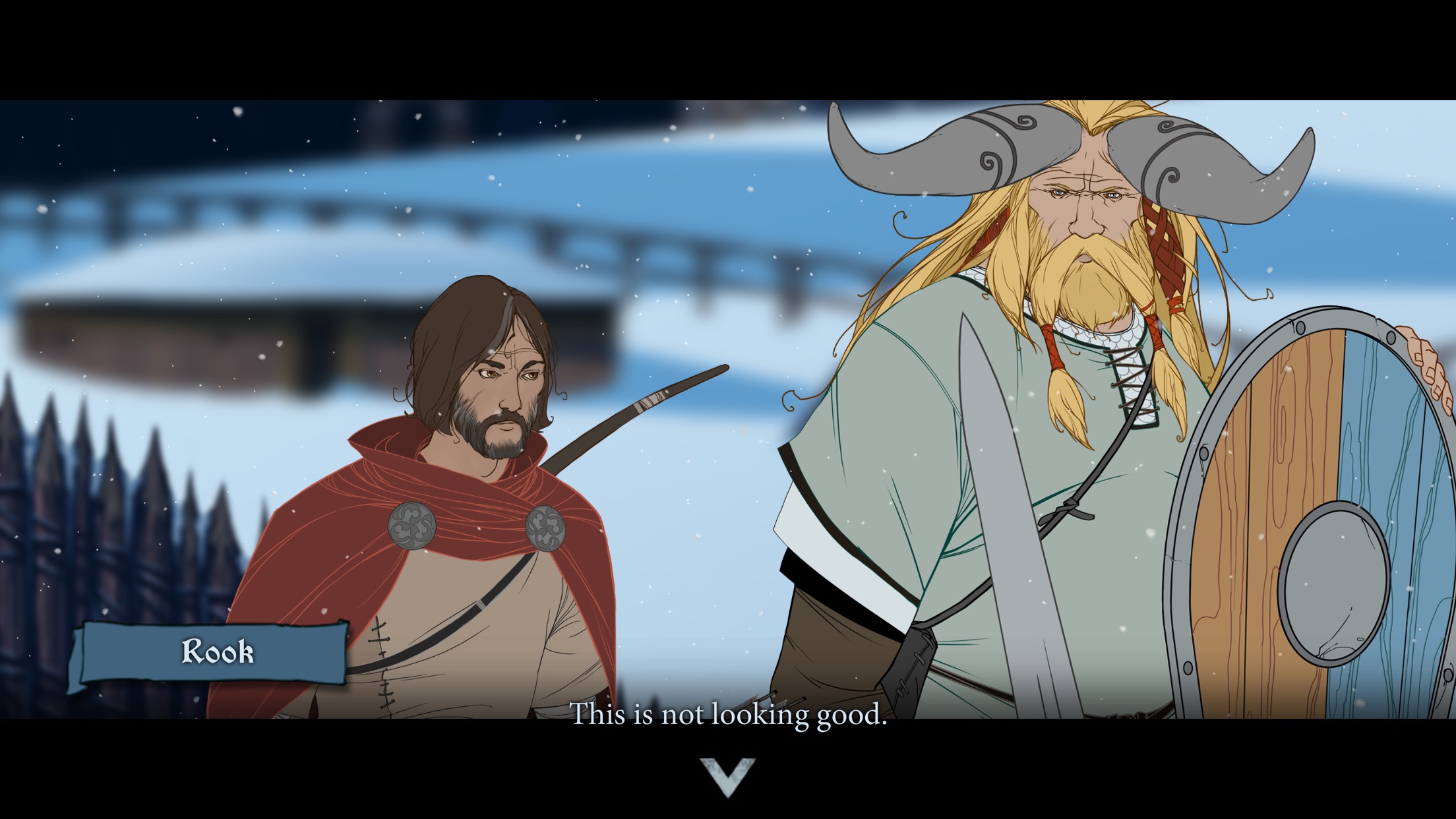
Smarter people than I often say that timing is everything. It’s hard to say how things may have gone for Stoic had they launched their planned Kickstarter project a few months earlier or later. I suppose we’ll never know. I have to believe, however, that at least a small portion of the game’s smashing success on Kickstarter came from the project launching on March 19th, 2012, scant days after Double Fine’s wildly-successful campaign to create a new adventure game came to a close. While there were games that used Kickstarter for funding prior to that, Double Fine brought massive attention to the platform, from the media, other developers, and perhaps most importantly, the players themselves. Things have settled down quite a bit since then, but for a short stretch of time, just about any project making even the most ludicrous of promises was getting funded with fervor. The Banner Saga‘s art looked great, the team had a strong pedigree, and people were riding high on crowdfunding. That’s likely why Stoic received not the $100,000 they asked for, but a whopping $723,886 instead.
With the project funded several times over, all that remained for the backers was to sit tight and wait for The Banner Saga‘s planned release date of November 2012. Here in 2016, it’s safe to say that it wasn’t a surprise Stoic missed that date, I suppose. It’s more surprising that they didn’t miss it by a wider mark. Receiving the amount of additional funding that they did, Stoic increased the scope of the planned game significantly. That kind of thing has been the death of many a promising Kickstarter, but things worked out mostly okay in the end here. Instead of the full single-player game releasing in November, a free multiplayer-only release called The Banner Saga: Factions was distributed in beta form to anyone who had backed the project. A few months later in February, that PvP sampler of the game was officially released for anyone to play. It was a decent enough taste, gave the developers some valuable feedback on the combat, and at least for some, helped salve the wound of the main game getting delayed. For a little while, anyway.

The main game was now scheduled for a release in the first half of 2013. That soon became mid-year, then mid-to-late 2013, then later in 2013. Stoic showed off the first hour or so of the game at the Penny Arcade Expo in August of 2013, and things finally seemed to be winding to a close. Finally, in November, a trailer was released citing a release date of January 14th, 2014 on PC and Mac. Well, at least it only missed 2013 by a few weeks. The reception to the game was generally positive, and it got even warmer praise when it released on iOS and Android in October of 2014. Ports to the Xbox One and PlayStation 4 released in January of 2016, and a Vita port of the game is planned for later this year. The sequel, aptly titled The Banner Saga 2, came out on PC and Mac in April of this year, and though we don’t even have a vague date yet, Stoic has confirmed that mobile versions of that game will be coming.
While it took a while to get to the finish line, and not everyone was happy with some of the decisions Stoic made along the way, the final game turned out pretty well, if you ask me. It’s a little on the short side for a turn-based strategy game, with the full game running just north of 10 hours for a complete playthrough, but you do get around the same number of missions as the average Fire Emblem game. They’re just a little shorter and less-involved than some other games in the genre. The branching narrative lends itself well to multiple playthroughs, as it’s fun to see what can happen if you choose differently. Sometimes, you’ll run into different battles entirely based on your choices, while other times what you choose will only make a difference in the story or your stats. It’s worth at least a couple of runs. The hot-and-cold pacing can sometimes test your patience if you’re not in the mood for it, but when The Banner Saga is on, it’s really on.
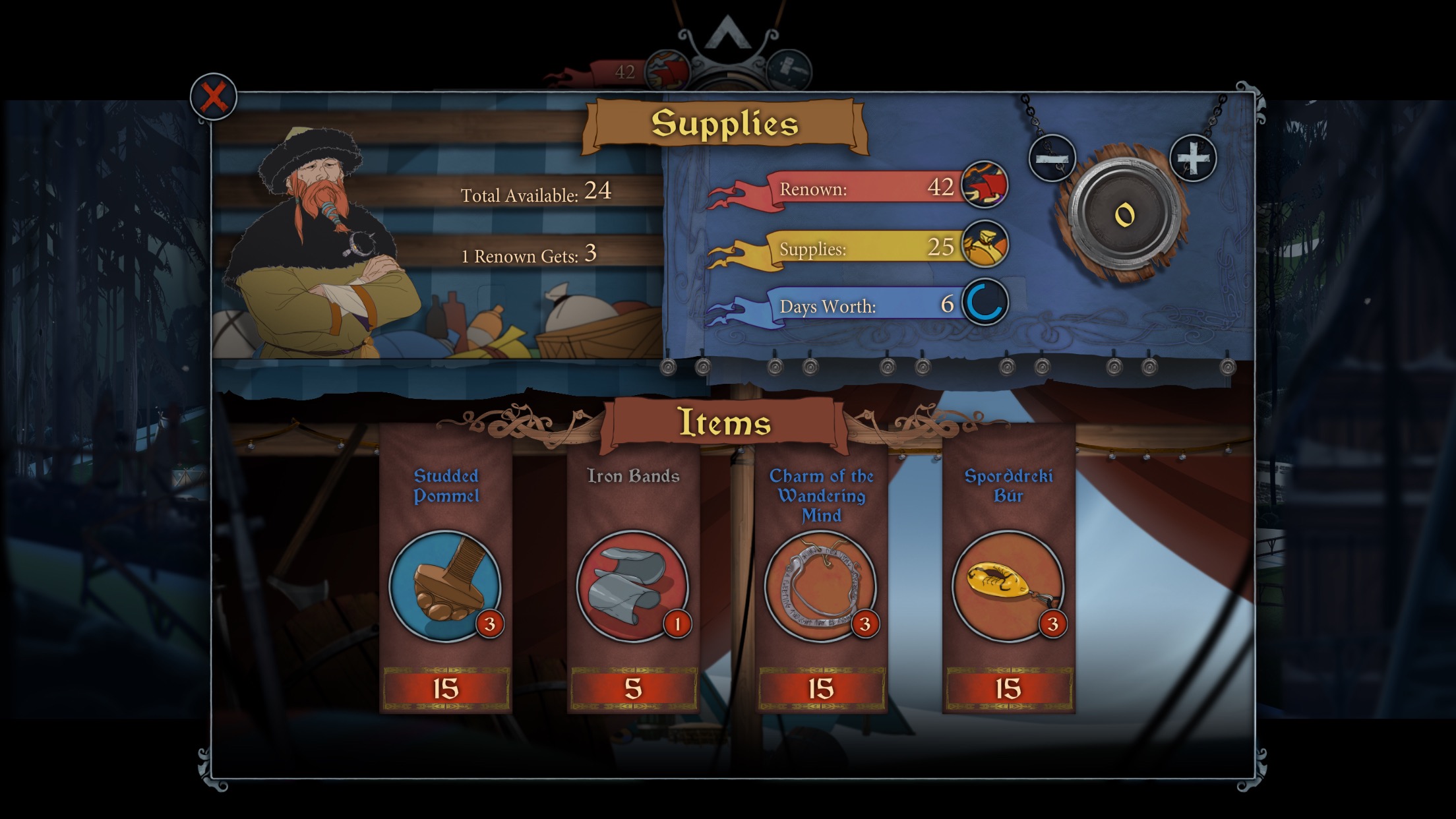
The battles have an immediately familiar feel to them, clearly inspired by some of the classics of the genre. At the same time, The Banner Saga makes some major changes to how combat works, sometimes for the better, sometimes with less favorable results. Like in other tactical strategy games, you have your team of characters that you’ll use to defeat an enemy team of characters, and each character can move and attack as their turn comes up. The calculations behind the scenes are considerably more streamlined than many other games in the genre, though. Your character’s strength stat is compared against the enemy’s armor stat, and the amount of damage you’ll do is equal to the difference. If your strength is equal to or lower than the enemy’s armor, you’ll only do a single point of damage or might see your blow deflected altogether. Luckily, you can choose to attack the enemy’s armor instead, chipping away at their defense with each strike.
Simple enough, though, right? Just wear down any enemy with a high armor stat, then let them have it. There’s one more twist here, however. The strength stat of any given unit is also their hit point value. As characters take damage, they’ll have less strength for their own attacks. You have to make a choice between softening their armor to set them up for a killing blow, or slowly chip away at their health, knowing it will make their retaliatory attacks weaker. And of course, the same thing goes for your own characters. Spend too much time destroying the opponent’s armor while they hack away at your health, and you may well end up too weak to overcome them. The kicker, however, is that because of another unusual aspect of The Banner Saga‘s battle system, you might not want to kill enemies right away.
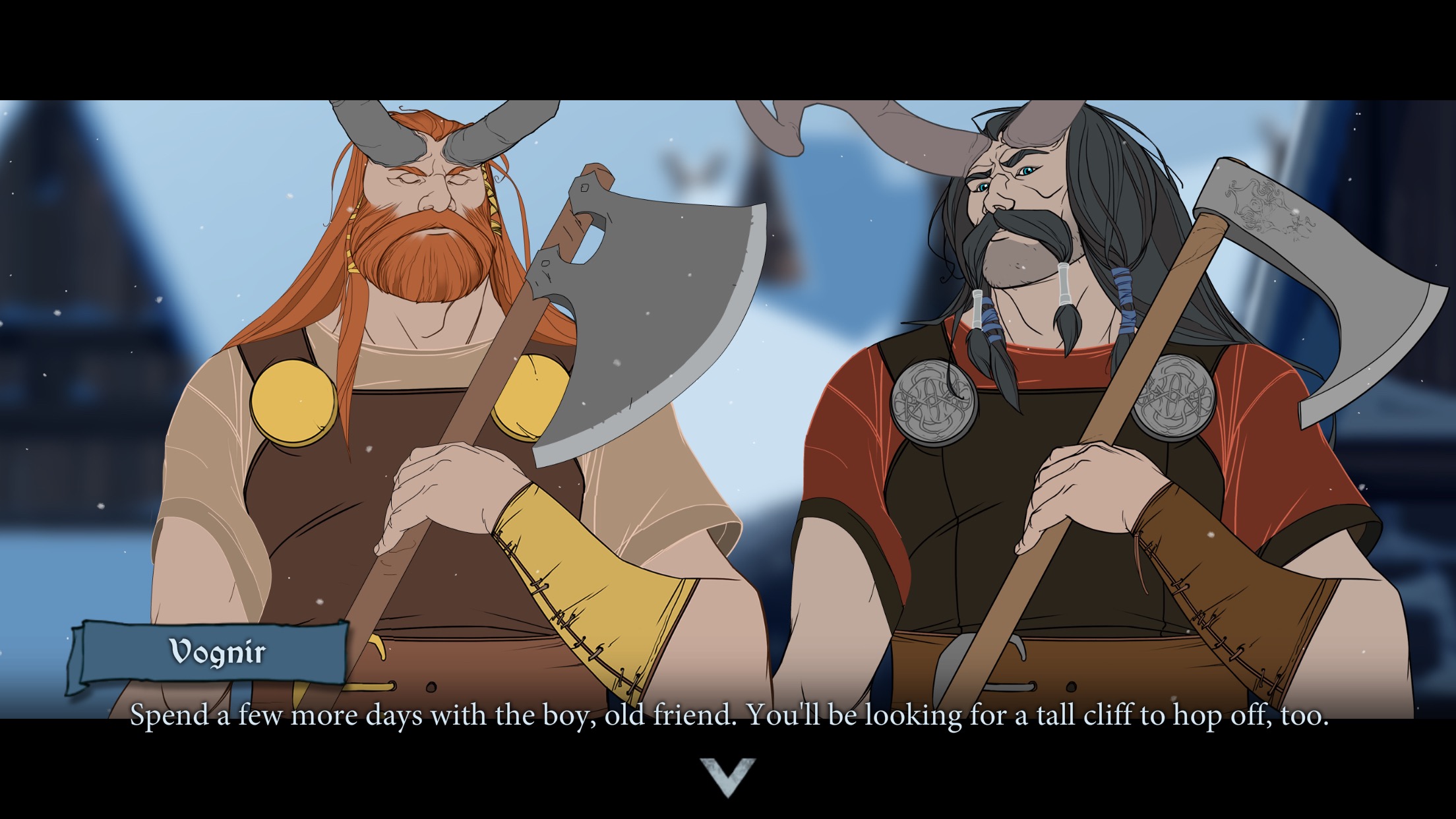
In most turn-based strategy games, it’s a good idea to eliminate pieces off the field as quickly as you can. If you can team up on one unit and defeat it, that’s generally preferable to wounding two units. That’s because typically in games of this genre, each unit gets to make a move on each turn. Take out a unit, and they can’t hit you back, weakening the enemy’s overall offensive capabilities. The Banner Saga, on the other hand, works more like chess. For every move you make, your opponent also gets to make a move, regardless of how many units they have remaining. Turns will cycle through the remaining units, but if, for example, you have four units left and your enemy has two, your four will each get a turn while the CPU’s two will get two turns apiece. You have to be very careful not to pick off too many weak enemies too quickly, lest their stronger ones get to smack you around more frequently.
Once one side is down to their last unit, however, all bets are off. From that point on, the remaining unit only gets to take one move against the entire opposing force. This gives battles in The Banner Saga an odd rhythm. It’s best if you can soften up and finish off the mid-tier units, then clear out the low-tier units, leaving only the strongest enemy unit in play. Then you can gang up on that unit and put them quickly to rest. In theory, at any rate. It doesn’t always go as smoothly as all that, and it certainly demands a different way of thinking compared to most strategy RPGs, but it’s nice to see a developer try something different from the norm. Other aspects of the combat system work more like you would expect. Units who sit beside each other will get a bonus to their defense, each job class has some special moves they can call on, and so on. Those special moves usually use willpower, a resource you can also spend on moving a little farther or dealing a little more damage, if you like.
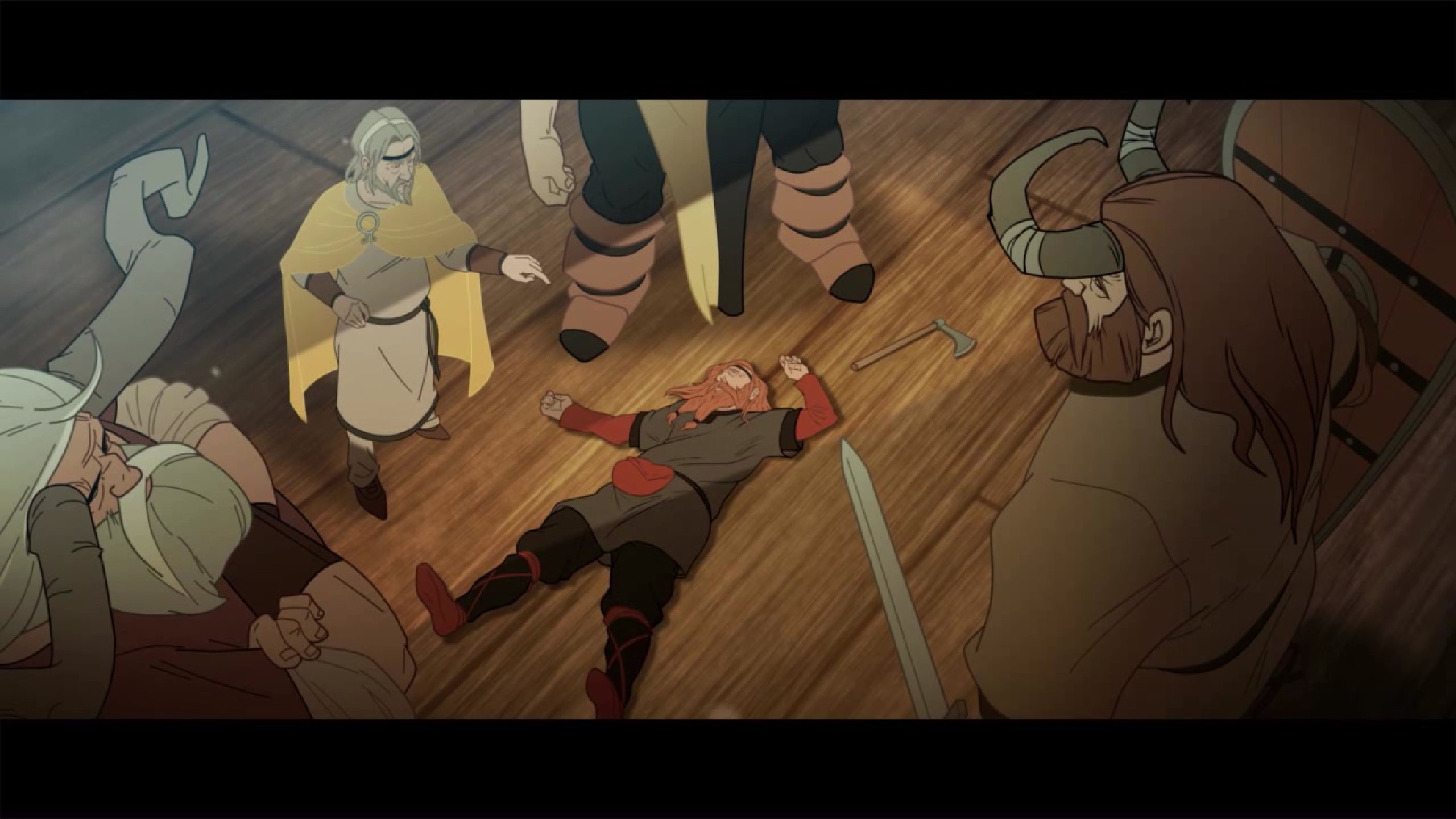
It’s not a big problem if you’re playing on normal, but if you’re playing on any modes with perma-death, you need to be very careful about this battle system’s different rules. Even a powerful character on your side can get put through the meat shredder if you leave too many tough enemies standings without their wimpy buddies. On normal difficulty, the worst you have to fear is that your characters will be injured and less effective in the next couple of days as a result. They’ll walk it off soon enough, however. Literally, in most cases, but we’ll get to that soon. Defeating enemies earns you Renown, which acts both as a sort of experience points system and your main currency. Renown can be spent to level characters up, or buy gear and supplies. You’ll get a nice chunk of Renown for winning a fight. If you lose a battle, the game will march on, but you’ll get less Renown out of it. Since you can’t really stop and grind, you’ll want to scoop up as much Renown as possible at every opportunity, so don’t lose.
Between battles, you’ll mostly be traveling. The days will pass, supplies will be consumed, and you’ll have to make some decisions now and then that will affect the size of your army, morale, amount of supplies, and Renown. You’ll also want to camp occasionally to keep your caravan’s spirits high and to save your game. The Banner Saga will auto-save at certain points, but it sometimes will go a while without making a checkpoint for you, so it’s important to do your due diligence. You can camp without resting, luckily, so it doesn’t cost you anything to save. Resting is important, though you need to keep an eye on your supplies, too. Run out of food to feed your caravan and things will become a lot harder for you. You can pick up supplies at each town in exchange for some Renown, and I certainly recommend you do so at every opportunity.

For all of the charms of its gameplay, the biggest way The Banner Saga stands out is in its impressive setting and plot. The world in this game feels like it’s just on the brink of exhaustion. It’s weary, dreary, and seemingly lived-in for so long that there are holes starting to appear in its fabric. For their part, the characters also seem like they’ve been through the wringer a few times, too. They’ll go through it a few more times by the end of the game. While the heavy atmosphere might not be for everyone, I have to commend Stoic on a job well done here. Playing as many RPGs as I do, I’ve seen hundreds of worlds created, and while it’s not something I poke at often in reviews, it does sometimes bug me how artificial they feel at times. The world of The Banner Saga is certainly a fantastical one, but there’s a strong sense of reality to it, a genuine history that we’re not privy to in its entirety. Not everything in this world is here to serve a purpose to the player or the gameplay, and I think that’s something more RPGs need to mess around with.
Of course, since this is but the first chapter of a planned trilogy, we don’t get much in the way of a satisfying resolution. That would bother me more if I thought the rest of the story wasn’t coming, but it obviously is, so it’s fine. I’ll likely replay this game again after the second one hits on mobile just to refresh myself. I realize now that I haven’t talked about how good the game looks and sounds, but I suppose plenty of people have written about that before, so I’ll leave that to them. I’ll just say that it’s refreshing to play an RPG that goes for a classic Western animation style, as we typically see games shoot for either realism or a Japanese anime look. Not that there’s anything wrong with those styles, but variety is the spice of life, as those aggravatingly wise smarter people say.

The iOS version of the game came out quite well, and is actually the developer’s favorite version of the game. I’m not a real fan of the way the camera tilts when you move the device, but other than that, the controls work well. The game runs smoothly, has an assortment of Game Center achievements, and is content-complete. It does that annoying thing of ignoring the physical mute switch, which never fails to bother me, but I suppose that happens a lot with developers coming over from the PC side of things. The game has only seen a few updates since its initial release, mostly to add new languages, fix a few bugs, and improve performance. To be fair, it hasn’t really needed any updates, either. Hopefully, Stoic will keep an eye on the mobile version as the years pass, but the initial release seems to be a steady one so far.
The Banner Saga packs a lot of interesting ideas into a familiar genre, and does it with an impressive amount of style. There are times where its innovations bite it in the backside a little, but it falters surprisingly rarely for something that ventures off the beaten path as often as it does. There are probably better strategy RPGs on iOS, depending on your tastes, but there aren’t that many really good ones that step outside the typical fantasy/sci-fi settings. In that regard, The Banner Saga is definitely a title worth adding to any RPG fan’s library. I’m looking forward to trying out the rest of the series as it becomes available on iOS.
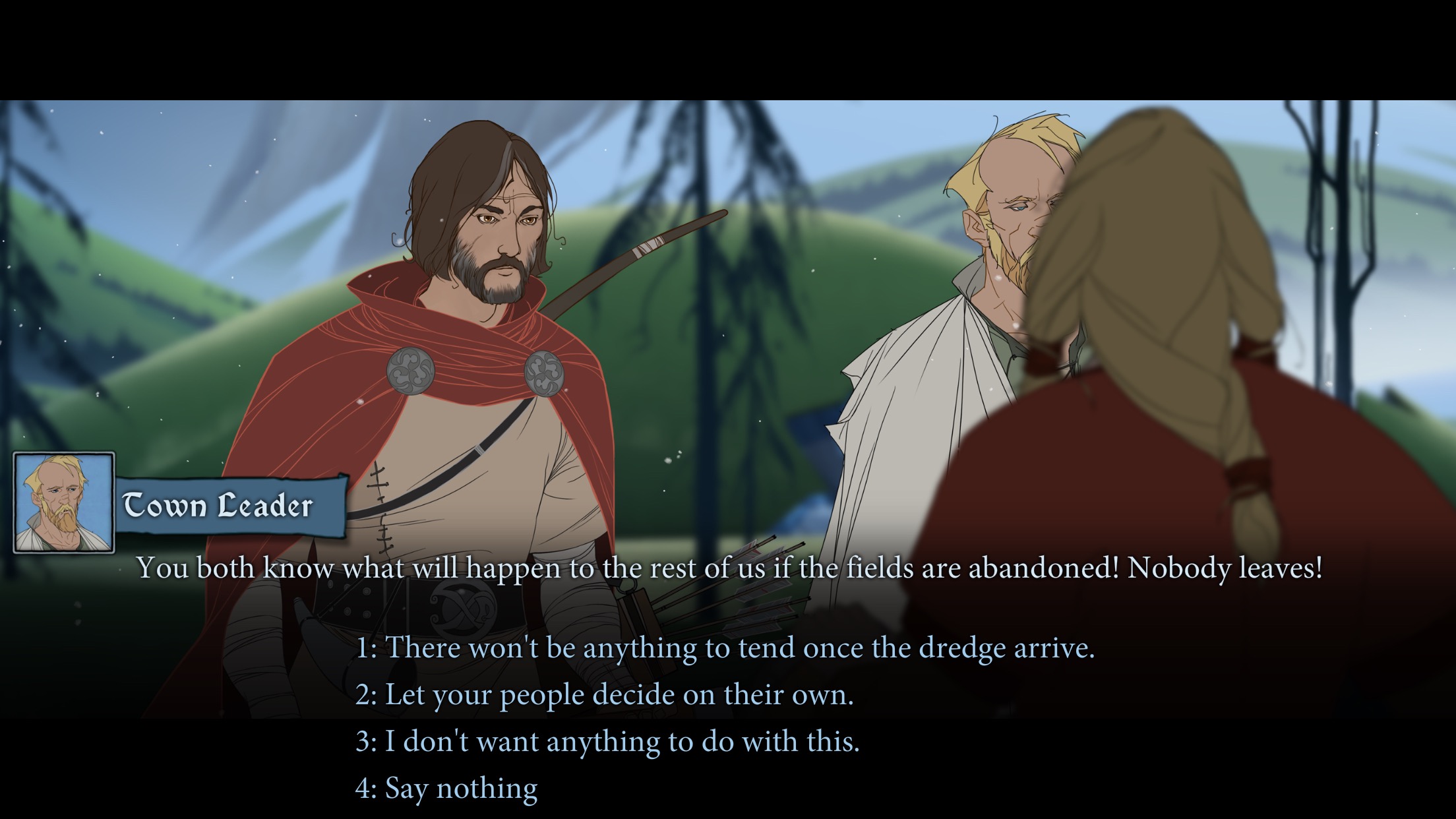
That’s just my take on The Banner Saga, though. What do you all think? I wonder if we have any of the game’s backers in our readership. If so, how did you feel about the whole process, and were you satisfied with the end result? I want to know, so please comment below, swing by the Official RPG Reload Club thread, or tweet me at @RPGReload. As for me, I’ll be back next week with another RPG. Thanks for reading!
Next Week’s Reload: Rimelands: Hammer of Thor ($4.99)